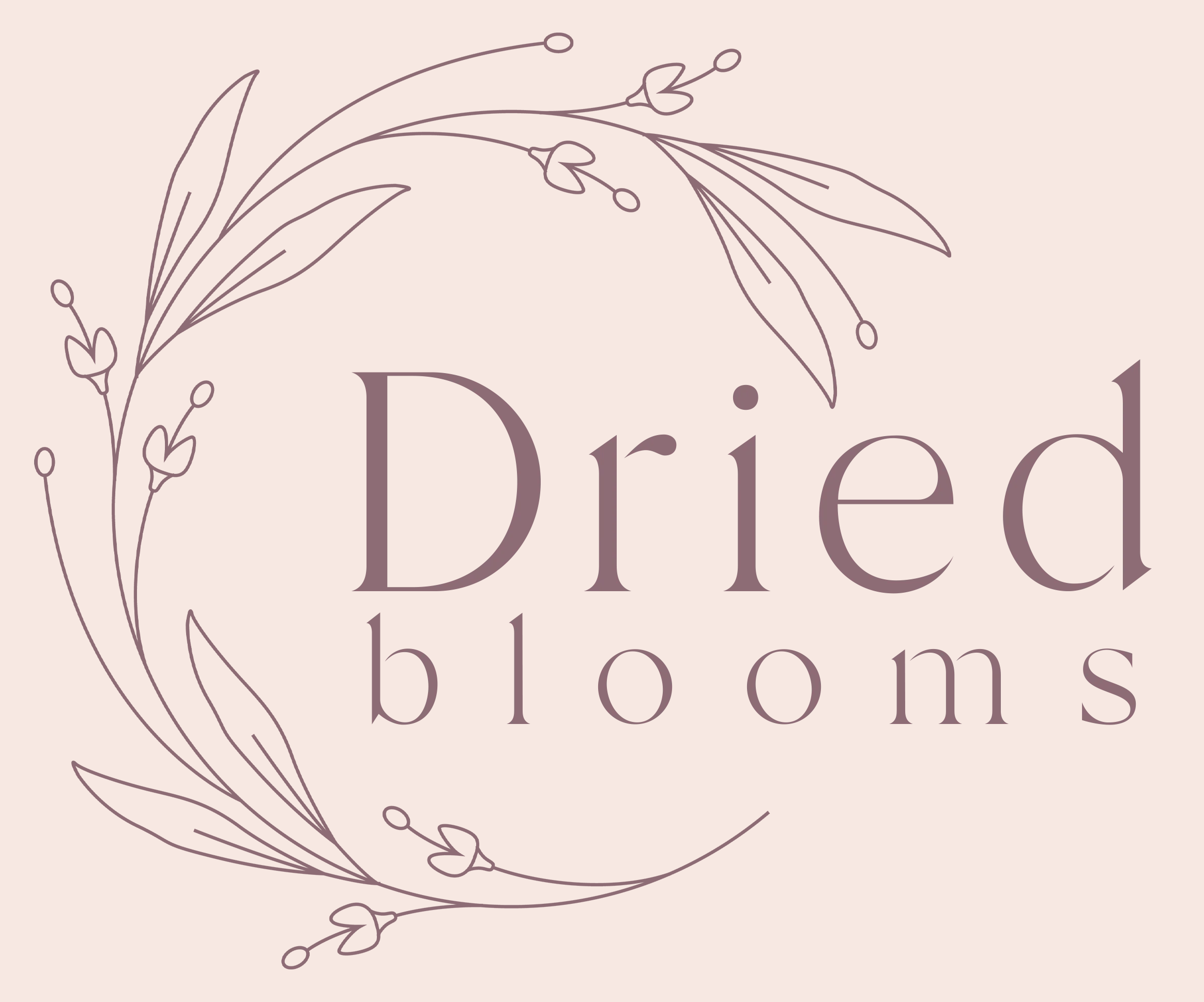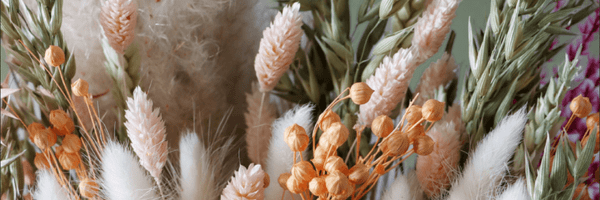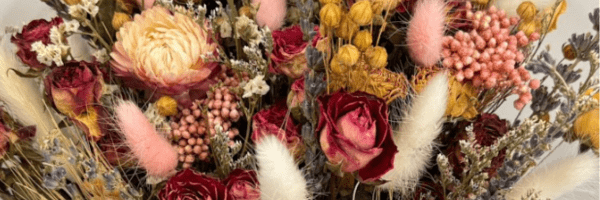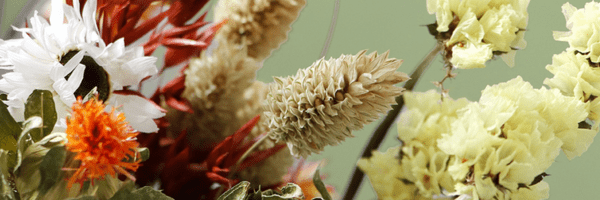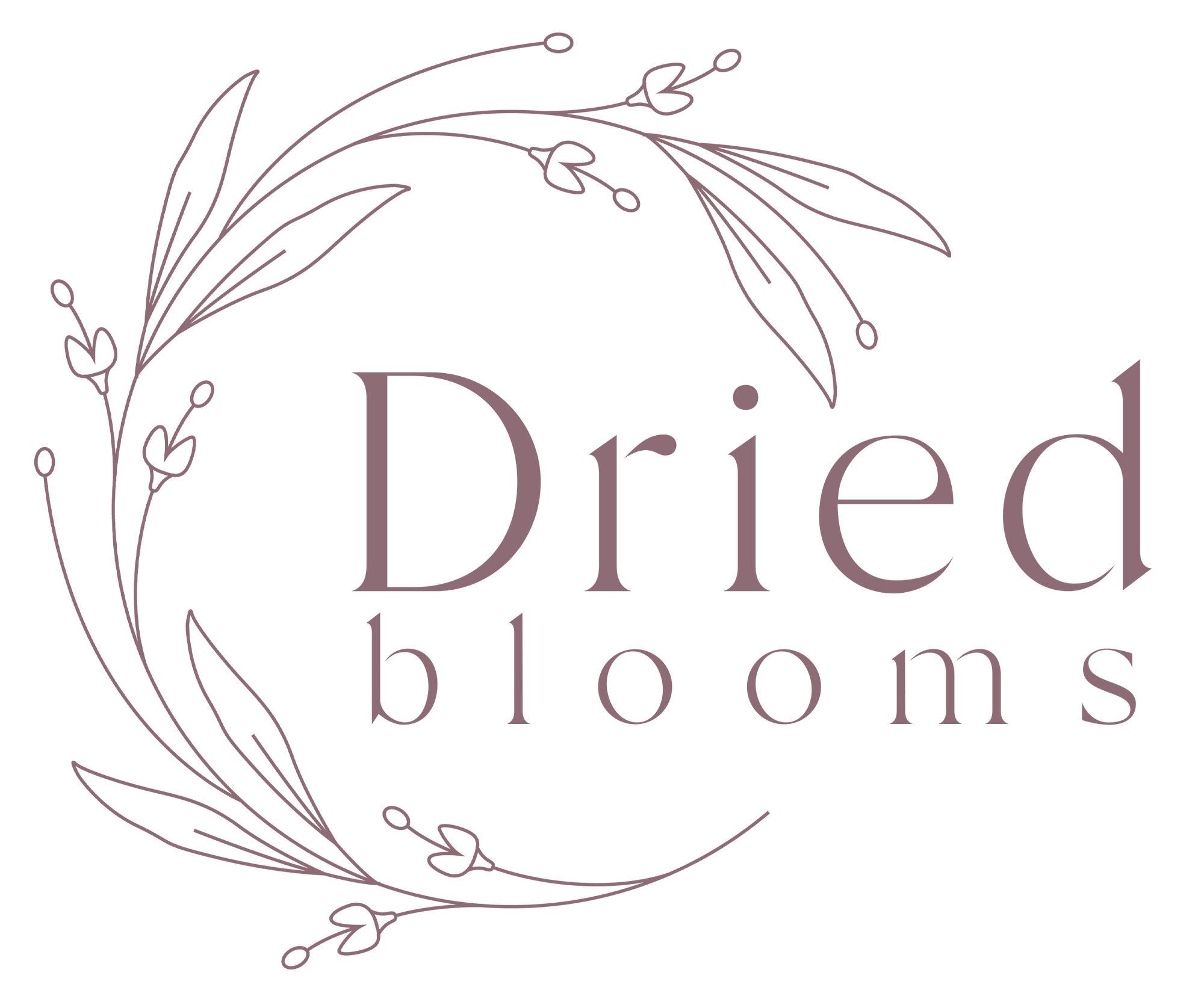If you love the timeless beauty of preserved blooms, you’ve likely encountered two main techniques: pressing and drying. Each method brings its own unique look, charm, and crafting possibilities. In this post, we’ll explore the differences, when to use each, and DIY project ideas you can try at home.
What Are Pressed Flowers vs. Dried Flowers?
Pressed Flowers
Pressed flowers are flattened between absorbent layers and pressure, forcing out moisture while preserving the pigments and shape in a two-dimensional form. This technique is often used to create botanical art, framed pieces, stationery, bookmarks, herbarium collections, and more.
The Japanese art of Oshibana is a venerable form of pressed flower art, arranging petals and leaves into pictorial compositions.
Dried Flowers
Drying, on the other hand, preserves the three-dimensional form of the bloom (or stem) by gradually removing moisture, often by air drying, silica gel, or other methods. Dried flowers better keep their volume, silhouette, and texture, making them ideal for bouquets, arrangements, wreaths, and natural decor.
In short:
| Feature | Pressed | Dried |
|---|---|---|
| Dimension | Flat, 2D | Three-dimensional |
| Texture | Delicate, papery | Textured, retains shape |
| Use cases | Framing, botanical art, cards | Bouquets, arrangements, wreaths |
| Color retention | Often very good if protected | Good, but prone to fading |
Pros & Cons: Pressed vs. Dried
Pressed Flowers — Advantages & Drawbacks
Pros:
-
Beautiful, flat aesthetic great for framing, cards, collages.
-
Long-lasting when sealed and protected (e.g. under glass or in books).
-
Takes up less space; easy to layer.
-
Ideal for crafts, scrapbooking, botanical illustration.
Drawbacks:
-
You lose depth and texture.
-
Bulky or thick flowers may not press well.
-
Risk of mold if moisture is trapped.
-
Can fade over time if exposed to sunlight.
Dried Flowers — Advantages & Drawbacks
Pros:
-
Keeps the original 3D form and texture.
-
Works beautifully for arrangements, wreaths, garlands.
-
Can create stunning silhouettes and volume.
Drawbacks:
-
More vulnerable to damage (breaking petals, shedding).
-
More susceptible to fading, brittleness, dust.
-
Takes more space.
-
Some parts (petal edges, thin parts) may shrink or curl during drying.
Ultimately, your choice depends on how you plan to use the preserved flowers and which aesthetic you prefer.
Best Flowers & Tips for Each Method
Flowers & Foliage That Press Well
-
Flat, single-layer blooms work best: pansies, violas, cosmos, daisies, anemones
-
Leaves, grasses, ferns, and herbs are excellent for pressing.
- Avoid fleshy, thick, succulent petals (e.g. begonias) — they can mold or not flatten properly.
Tips:
-
Pick flowers in the morning after dew evaporates.
-
Use fresh, healthy blooms—avoid blemishes or insect damage.
-
Press soon after picking so the petals don’t wilt.
Flowers & Foliage That Dry Well
-
Flowers that naturally hold structure: roses, hydrangeas (in small clusters), lavender, statice, strawflowers, bunny tail grass.
- Avoid very delicate petals or flowers high in moisture.
Tips:
-
Trim excess foliage.
-
Hang upside down in small bunches, in a dark, dry, ventilated space (out of direct sunlight).
- For faster drying, use silica gel or desiccants — especially good for bulk or delicate blooms.
- Use a shallow vase method: let the flower dry slowly as water evaporates.
How to Press Flowers (DIY)
Here’s a step-by-step guide to pressing your own flowers:
Method A: Book Pressing (Simplest)
-
Place the flower between absorbent sheets (parchment paper, blotting paper).
-
Close in a heavy book (or stack of books).
-
Add weight on top (more books, bricks).
-
Wait 1–4 weeks, replacing damp paper if needed.
Method B: DIY Wooden Press
-
Take two rigid wood panels of equal size. Drill holes in the corners.
-
Place alternating layers: cardboard → absorbent paper → flowers → paper → cardboard.
-
Sandwich between the wood panels and insert screws + wing nuts.
-
Tighten gently to apply even pressure.
-
Wait 2–4 weeks.
Method C: Microwave / Quick Pressing
-
Place flowers between absorbent paper inside a microwave-safe press.
-
Microwave for short bursts (e.g. 25–30 seconds).
-
Open, let moisture escape, then repeat in short bursts until fully pressed.
-
Let it cool before opening.
This method is speedy and good when time is limited, but must be done carefully to avoid scorching.
Method D: Iron Method (In A Pinch)
-
Sandwich your flower between two pieces of absorbent paper.
-
Use a warm (no steam) iron, press briefly (15–30 seconds).
-
Let cool. You may need to repeat steps.
This method is riskier (creases, discoloration) but useful for quick crafting.
Tips:
-
Use non-textured, smooth paper (not paper towels) to avoid imprinting.
-
Change blotting paper every few days if it becomes damp.
-
Label your pressed specimens (flower name, date) for reference.
How to Dry Flowers (DIY)
Air Drying (Classic Method)
-
Trim stems and remove extra foliage.
-
Tie small bunches with twine or rubber bands.
-
Hang upside down in a cool, dark, dry, well-ventilated space.
-
Leave for 1–4 weeks until fully dry.
-
Store away from humidity and sunlight.
Silica Gel / Desiccant Drying
-
Choose an airtight container.
-
Add a layer of silica gel.
-
Place flowers gently on top.
-
Cover fully with more silica gel.
-
Seal container, wait until dry (several days to a week).
-
Remove carefully, brush off excess gel.
This method helps retain shape and color.
Vase Drying Method
This is especially useful for hydrangeas:
-
Place stems in a vase with a bit of water (1–2 cm).
-
Let the water evaporate, allowing natural slow drying.
-
Avoid overcrowding and keep them away from direct sun.
Creative DIY Ideas Using Pressed or Dried Flowers
Here are fun projects that showcase the preserved beauty of your blooms:
-
Pressed Flower Art & Framed Botanicals — Design compositions or herbarium-style layouts.
-
Greeting Cards / Stationery / Bookmarks — Attach pressed flowers to cardstock with sealant.
-
Resin Crafts — Embed pressed flowers in resin jewelry, coasters, paperweights.
-
Pressed Flower Jars / Candle Holders — Mount pressed petals on glass jars or votives for illuminated displays.
-
Shadow Boxes — Combine pressed flowers with small dried elements in layered frames.
-
Dried Flower Arrangements — Use dried stems for vases, bouquets, centrepieces, wreaths.
-
Potpourri / Sachets — Use petals, essential oils, dried leaves for fragrant accents.
-
Floral Imprint Clay Ornaments — Press petals into air-dry clay or ceramics, then paint or glaze.
How to Care for Your Preserved Flowers
To make sure your pressed or dried creations last:
-
Protect from sunlight — UV rays fade pigments.
-
Avoid humidity — Moisture can cause mold, curling, or disintegration.
-
Frame / seal — Use glass or UV-protective fronts for pressed works.
-
Dust carefully — Use a soft, dry brush or canned air on dried arrangements.
-
Display in stable environments — Avoid extreme heat, moisture, or fluctuations.
-
Use fixatives — A gentle spray of clear, matte fixative or UV sealant can strengthen petals (test on a sample first).
Pressed flowers often last a very long time when sealed properly — some specimens from the 19th century still retain beauty.
If you enjoyed this article, you may enjoy learning why you should choose dried flowers for Low-Waste Decorating?
Final Thoughts
Pressed and dried flowers both offer a way to capture and enjoy nature’s beauty long after the bloom has faded. The best method depends on your creative vision: whether you're crafting flat botanical art, designing 3D arrangements, or blending both approaches in mixed media. Experiment with both techniques, mix and match for hybrid projects, and let your creativity guide you.
If you enjoyed this guide, feel free to explore our infused collections, dried and pressed flower kits, or share your own DIY projects with us.
FAQs
Is pressing or drying better?
Neither is objectively “better” — it depends on your goals. If you want flat art, cards or book projects, pressing is ideal. For preserving shape, texture, and volume (for vases and bouquets), drying is usually better.
Can I press a flower after it has been dried?
Yes — you can gently flatten a dried flower, though it might not press as cleanly as fresh blooms. The result may retain a bit of 3D structure.
How long do pressed or dried flowers last?
If kept protected from light, humidity, and damage, pressed flowers can last for decades. Dried flower arrangements can also remain attractive for years, although some fading or wear is natural.
Which flowers fade faster or discolor?
Delicate petals, very vibrant reds or purples, and thin petals often fade faster, especially under light exposure. Flowers high in moisture or acidity may also shift in tone during drying.
Can I press or dry wedding bouquets or sentimental blooms?
Absolutely! Many people preserve bridal bouquets either by pressing into keepsake frames, or by drying and arranging them in containers or wreaths. Starting the process soon after the event gives the best results.
Do I need special tools or expensive supplies?
Not necessarily. You can start with household items like books, cardboard, paper, and string. However, a good flower press or quality silica gel can improve results and convenience.
